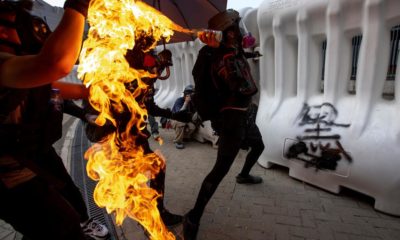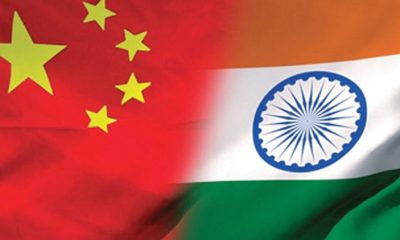World
Military hotline between India, China to be set up soon

Beijing: A military hotline been the armed forces headquarters of India and China is expected to become operational soon, according to defence ministry officials here.
Yang Yujun, spokesman for the ministry of defence, told visiting Indian journalists on Tuesday that direct telephonic links between the general headquarters of the two countries is expected to be set up in the near future.
He said such a mechanism was necessary to “increase mutual trust, avoid misjudgements and prevent crisis” from developing.
Yang, who has the Indian equivalent title of brigadier-general said talks in this regards were in an advanced stage. Later, other officials said that once the main hotline was established, more such direct links between senior military officers in the field would be set up.
The spokesman also said that consultancy mechanism between China and India on the border issue and consultations at various levels was “functioning”.
He was asked about a sentence in the white paper on China’s Military Strategy which was released on May 26 this year, which stated that “certain disputes over land territory are still smouldering”.
The spokesman said that this was in the context of some disputes which were “leftover from colonialism” and referred to north-east Asia and the Asia-Pacific region, thus steering it away from China-India border question.
Later, Xu Quyu, deputy chief of the institute for strategy at the National Defense University explained that something was lost in translation. In Chinese, the exact words used were “still there” and the word “smouldering.”
Officials also informally explained that the incursions seen on the India-China border often happened from both the sides and was the result of a lack of a clear demarcation.
World
Lockdowns in China Force Urban Communities to Defy Censorship and Vent Frustration Online

Shanghai’s rich middle class is leading a wave of online dissent over the strict and prolonged lockdowns imposed in various parts of the country. Chinese internet censorship is struggling as patience is wearing thin in many urban centers, coming up with creative forms of online protests.
Social Media Posts Revealing Lockdown Tension in Shanghai
Drawn-out lockdowns are nothing new in China as authorities insist with the nation’s zero-Covid policy since the start of the pandemic. Currently over This time around, however, metropolitan areas like Shanghai are increasingly difficult to keep quiet, given that its more than 25 million residents have seen weeks of total isolation along with food shortages and many other service interruptions.
Dozens of towns and reportedly over 300 million Chinese citizens have been affected by lockdowns of different severity. As expected, urban netizens have been most outspoken over their difficulties by finding creative ways to get around state censorship and bans placed on topics, news comments and spontaneous campaigns.
Shanghai residents have been using mobile proxies and hijacking seemingly unrelated hashtags to talk about healthcare issues, delivery failures and the overall severity of their situation. The “positive energy” that the Chinese government wants to transmit during the recent prolonged series of lockdowns does not come naturally to those counting food supplies and online censors are working hard to filter words, trending topics and undesired social media sharing.
WeChat groups and message threads are under constant monitoring. Posts questioning the zero-Covid approach have been quickly deleted, including by leading Chinese health experts like Dr. Zhong Nanshan. Video footage is soon censored and protests and investigations are quickly made to disappear.
Where this has not worked, officials have exposed banners with warnings and outright threats like “watch your own mouth or face punishment”, while drones have been patrolling the city skies. Yet, if anything, this has led to further tensions and unspoken confrontation with Shanghai’s educated and affluent middle class.
Creative Online Solutions Harnessing Civic Energy
Announcements by Chinese social media that they would be publishing the IP addresses of users who “spread rumors” have not helped either. Tech industry research has shown that much of Asia’s tech-savvy population has a habit of using mobile proxies and other privacy tools, quickly finding workarounds to browse the internet freely and talk to the world about the hottest topics.
The sheer volume of forbidden posts is already a challenge for the very censorship system, experts explain. Unable to track all trending hashtags, state workers overlook topics that speak about the US, Ukraine or other popular news. Linking human rights elsewhere to their situation, Chinese online dissidents establish their informal channels and “hijack” the conversation to share personal or publicly relevant information about the Covid suppression in their town.
Sarcastic and satirical posts still dominate. Others hope to evade the censors by replacing words from famous poems or the national anthem. One thing is certain – social media, when harnessed with the right creativity, has proven its ability to mount pressure on the government in even some of the most strictly controlled tech environments like China.























